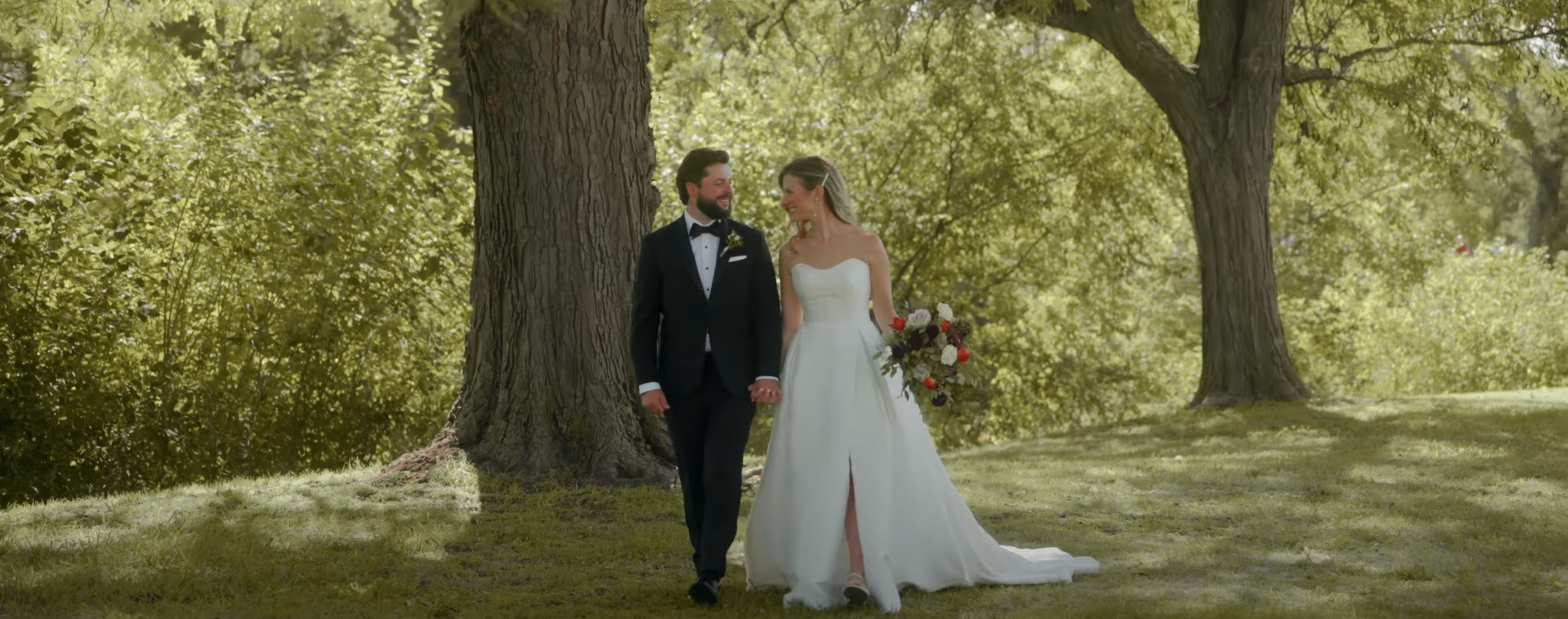Couples who care deeply about the planet are redesigning weddings from the ground up, treating every decision—from how invitations are sent to where leftovers go—as an opportunity to shrink their celebration’s footprint. This shift only succeeds if guests show the same dedication.
Whether you have just opened a minimalist e‑invite or you are packing for the big day, the guide below explains how to support a climate‑conscious ceremony without sacrificing any of the joy that makes a wedding memorable.
RSVP Responsibly
The first eco‑choice arrives with the invitation. Many planners now route responses through digital hubs such as the Sustainable Wedding Alliance, which replaces paper inserts with a single online dashboard that tracks meals, allergies, and plus‑ones in real time.

Responding promptly does more than soothe an anxious couple; it tells caterers exactly how many portions to prepare, so they can buy only what will be eaten instead of padding orders against late replies.
That simple act prevents food waste before it starts and spares printers the emissions of last‑minute place cards and menus.
Rethink Your Travel Footprint
Transportation often towers over every other emissions category. One Stanford Magazine case study showed that the flights for 200 guests can generate more than 40 tons of carbon dioxide, roughly twice the average American’s annual footprint.
STANFORD magazine Start by studying the couple’s logistics sheet; many share a spreadsheet where travelers from the same city can coordinate carpools or divide one rideshare instead of booking separate cars.
If you must fly, use tools such as the Mindfully Wed carbon‑footprint calculator to estimate your share, and then purchase the equivalent offsets through TerraPass wedding packages, which offer tiered “silver,” “gold,” and “diamond” options pegged to guest counts.
Extending the trip by a day or two—turning the event into a long weekend—consolidates emissions into one journey rather than two short hops later.
As explored in Waste-Audit 101—How to Track, Measure and Publicly Share Your Wedding’s Footprint, embracing public transport at the destination when possible is another impactful step; a full shuttle bus emits a fraction of the carbon produced by a convoy of empty‑seat taxis.
Sustainable Accommodation Choices
Checking into the right hotel can reinforce every green effort the couple has made. Look for properties carrying a Green Key or similar certification, which verifies meaningful reductions in water use, energy consumption, and single‑use plastics.
Green Key Booking inside the couple’s reserved block, even if an aggregator shows a marginally cheaper rate across town, keeps everyone on the same shuttle loop.
Fewer scattered pickups translate into fewer vehicle miles, so the planet wins along with your wallet.
Dress for Sustainability
Fast fashion is responsible for about 10 percent of global greenhouse‑gas emissions—more than aviation and shipping combined, according to UN climate data.
Instead of buying a new one‑wear outfit, tap rental services like Rent the Runway, whose life‑cycle assessments show lower water and energy inputs per garment than manufacturing new clothes.
Nice to see megsys being eco friendly and recycling one of her old wedding dresses…🤣
Apparently she was offered traditional dress to wear but refused, see how the other women are dressed modestly, covered up and with headwear. Then markle has to insult them by stubbornly… pic.twitter.com/SFJHY4mJXK— Fi 🌱🦖🚜 🦖🌱 (@Fibutton) May 12, 2024
Vintage stores and local clothing swaps are another smart route to a statement look; pairing a well‑loved dress or suit with fresh accessories keeps style high while textile waste stays low.
Even small tweaks, such as polishing the shoes you already own or borrowing a clutch from a friend, cut the carbon tally further.
Gift Greener
Many eco‑focused couples replace the traditional blender‑and‑bath‑towel registry with impact‑driven alternatives.
If the invitation lists a reforestation fund or ocean‑cleanup project, resist the temptation to add a physical present “just in case”; your charity contribution is the gift they truly want.
For duos who still enjoy keepsakes, choose favors that feed the earth rather than a landfill—plantable seed‑paper cards or wildflower packets available from artisans on Etsy let the memory of the day bloom in your garden. Etsy
Avoid freelancing with big boxed items that create shipping emissions and risk duplicates. When in doubt, ask the couple or their planner; clear communication prevents both clutter and carbon.
Mindful Moments During the Celebration
Once the festivities start, the most helpful guests act as quiet stewards of the couple’s zero‑waste plan.
Finish the locally sourced meal that the chef plated with precise portions, and guide tablemates toward the clearly labeled compost and recycling stations instead of letting everything land in general trash.
Eco -Friendly Wedding in Bengaluru, Karnataka pic.twitter.com/mooW85SIwL
— 𝗞𝗿𝗶𝘀𝗵𝗻𝗮𝗣𝗿𝗲𝗲𝘁𝗶 (@Krishnavallabhi) July 22, 2024
If you notice trays of untouched hors d’oeuvres stacking up near the kitchen, offer to help venue staff pack surplus food for pickup by the OLIO community sharing app, which redirects perfectly good dishes to nearby families within hours.
Even little gestures—returning reusable glassware to a collection rack rather than abandoning it on a lawn—ensure materials stay in a tight loop rather than becoming single‑use litter.
Tech‑Savvy, Low‑Impact Etiquette
Digital clutter carries a physical cost because data centers draw enormous power. Share photos through a single cloud folder instead of blasting 40‑megabyte files to every relative, and compress images before uploading.
If the couple asks for an “unplugged” ceremony, honoring that request not only keeps the moment intimate but also slashes a surprising slice of data‑stream energy.
Tagging responsibly and skipping redundant uploads keep the event’s virtual footprint as lean as its physical one.
After the Last Glass
The final hours matter as much as the opening vows. Rather than hailing individual cars, coordinate departure times so every shuttle leaves at capacity, or split an electric rideshare with friends staying at the same hotel.
Ask the planner whether lanterns, candleholders, or signage need to be sorted for return; acting as an extra pair of hands may help the rental company reclaim everything intact, preventing replacements that consume new resources.
When it is time to say thanks, a thoughtfully worded e‑card—or at most a note on 100 percent post‑consumer paper—delivers all the sentiment without the timber.
Parting Green Wisdom
Being an exceptional guest at a green wedding is less about perfection than partnership. Prompt digital RSVPs, shared rides, rented outfits, waste‑free gifts, and mindful behavior during the reception each shave a few kilos of carbon.
Add those up across dozens or hundreds of attendees, and the difference is dramatic: a celebration that honors both the couple’s love story and the planet that hosts it.
Embrace the invitation to tread lightly, and you will prove that in 2025 and beyond, green really is the new white.

